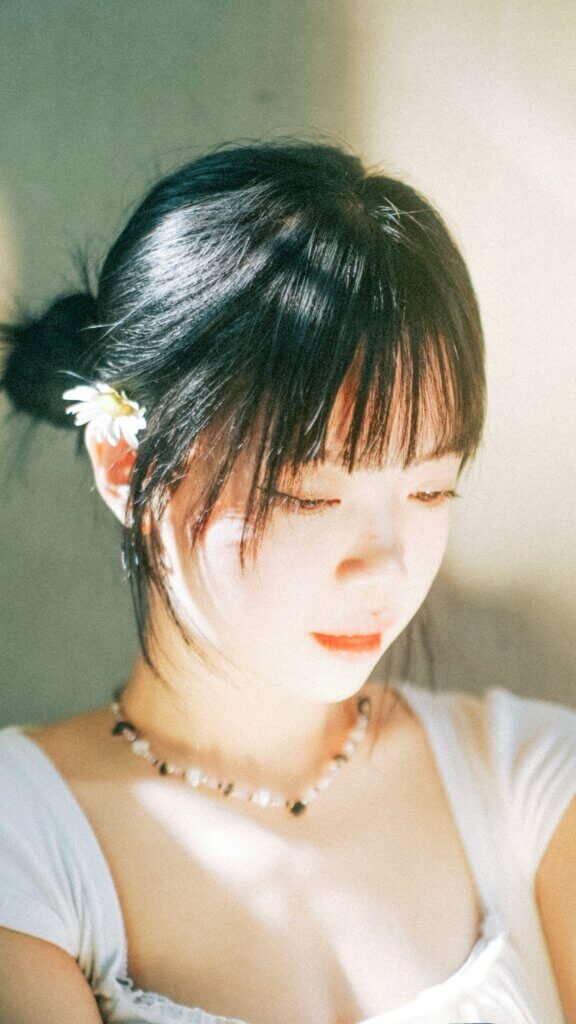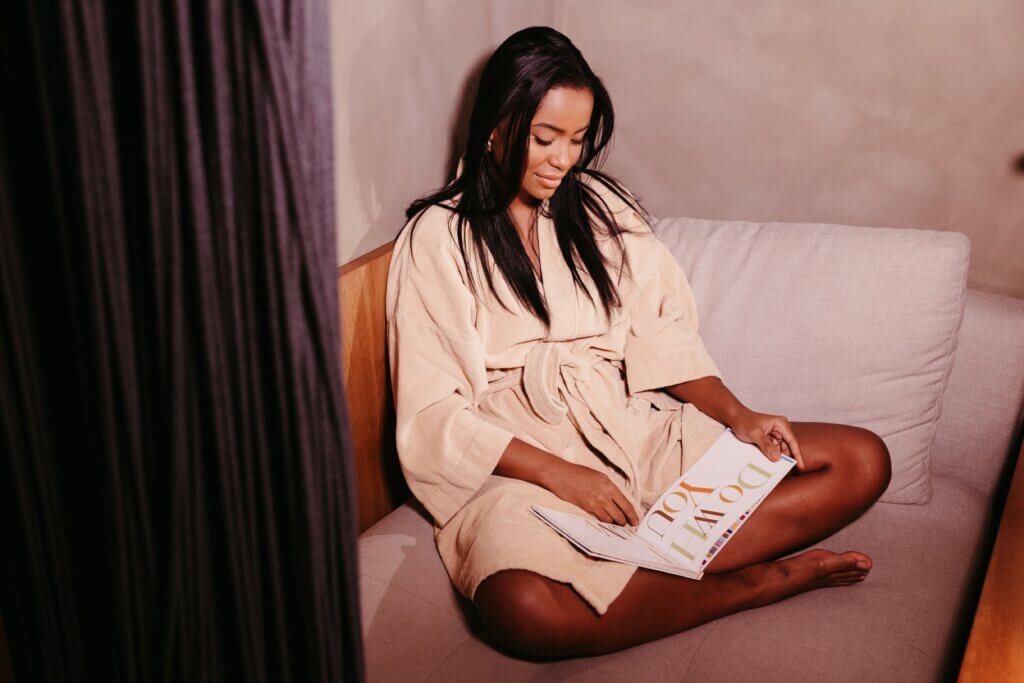Are you looking for creative ways to bring perennial plants into your garden without taking up too much space? Look no further! In this article, you will discover a plethora of fantastic ideas for perennial container gardening. From vibrant flowers to lush foliage, these ideas will help you transform your outdoor space into a beautiful and thriving oasis. So grab your gardening gloves, and let’s dive into the world of perennial container gardening!

Selecting the Right Containers
Consider the Size and Depth
When selecting containers for your perennial plants, it’s important to consider their size and depth. Perennials have longer lifespans than annuals, so they need containers that provide enough space for their roots to grow and thrive. Choose containers that are deep enough to accommodate the root systems of your chosen plants, allowing them to establish a strong foundation. Additionally, consider the size of the containers in relation to the space where you plan to display them. Make sure the containers fit harmoniously in your garden or on your patio, creating a visually appealing and balanced arrangement.
Choose Quality and Durable Materials
The quality and durability of the container is another crucial factor to consider. Opt for containers made from high-quality materials such as ceramic, concrete, or fiberglass. These materials are not only visually appealing but also withstand the elements well. Avoid containers made from cheap or flimsy materials that may deteriorate quickly or crack under pressure. Remember, you want your perennial containers to last for many seasons, so investing in quality materials will ensure their longevity.
Provide Drainage Holes
Proper drainage is essential for the health of your perennial plants. When selecting containers, make sure they have drainage holes at the bottom to allow excess water to escape. Without proper drainage, the roots can become waterlogged and susceptible to rot. If you find a container you love that doesn’t have drainage holes, consider drilling some yourself or using a liner with drainage holes to prevent water accumulation. This will help maintain the right balance of moisture in the soil and prevent root diseases.
Consider Self-Watering Options
If you’re concerned about watering your perennial containers regularly, consider self-watering options. These containers have built-in reservoirs that allow plants to draw water as needed. Self-watering containers are a great choice for busy gardeners or those who may forget to water their plants regularly. They help maintain consistent moisture levels and prevent over or underwatering. With self-watering containers, the watering process becomes more efficient and less labor-intensive, giving you more time to enjoy the beauty of your perennial plants.
Choosing the Perfect Perennial Plants
Consider Local Climate and Sunlight
When choosing perennial plants for your containers, it’s important to consider the local climate and sunlight conditions. Different plants have varying tolerance levels for heat, cold, and sunlight. Research the specific requirements of the perennials you’re interested in and ensure they are suitable for your region. Choose plants that thrive in your climate, as they will have a higher chance of success in your containers. Additionally, consider the amount of sunlight your chosen location receives throughout the day. Some plants prefer full sun, while others thrive in partial or full shade. Matching your plant selections to the available sunlight will help ensure their growth and flowering potential.
Choose Plants with Similar Water and Sunlight Requirements
To create a harmonious and low-maintenance container garden, select perennial plants with similar water and sunlight requirements. This will make it easier for you to provide them with the care they need without constantly adjusting watering or sunlight exposure. Group plants together that have similar needs, such as watering frequency and intensity of sunlight. This way, you can cluster containers and provide the ideal conditions for the different plants in each group. Choosing plants with compatible requirements will not only simplify your gardening process but also create a visually cohesive and thriving container garden.
Select a Mix of Flowering and Foliage Plants
To add interest and beauty to your perennial containers, consider selecting a mix of flowering and foliage plants. Flowering perennials will provide bursts of color and attract pollinators, enhancing the visual appeal of your containers. On the other hand, foliage plants offer unique textures, colors, and shapes that add depth and dimension to your arrangements. By combining both flowering and foliage plants, you create a balanced and visually stunning container garden that can provide year-round interest.
Consider Planting Perennials in Different Heights
To create a dynamic and eye-catching display, consider planting perennials of different heights in your containers. By incorporating plants of varying heights, you can add layers and depth to your arrangements. Place taller perennials towards the back or center of the container and shorter ones towards the front. This arrangement will create a natural flow and prevent plants from overshadowing each other. Mixing heights also allows you to showcase the unique characteristics of each plant and create a visually appealing composition.

Creating Stunning Color Combinations
Select a Color Theme
Choosing a color theme for your perennial container garden can help create a cohesive and visually pleasing display. Consider selecting two or three main colors that complement each other and resonate with your personal style or the overall aesthetic of your garden. Whether you prefer vibrant and bold colors or soft and subtle hues, a color theme will guide your plant selections and ensure a harmonious combination of colors in your containers.
Combine Complementary Colors
To create a visually striking container garden, experiment with combining complementary colors. Complementary colors are located opposite each other on the color wheel and create a high-contrast effect when placed together. For example, pairing purple-flowered perennials with yellow-flowered companions will create a vibrant and attention-grabbing display. By combining complementary colors, you can enliven your containers and make them stand out in your garden or on your patio.
Design Monochromatic Containers
If you prefer a more serene and sophisticated look, consider designing monochromatic containers. Monochromatic containers feature shades and variations of a single color. For example, a container with different varieties of pink flowers and foliage creates a calming and cohesive arrangement. Monochromatic designs allow the texture and form of the plants to take center stage, creating a visually pleasing display that exudes elegance and simplicity.
Experiment with Color Contrasts
Don’t be afraid to experiment with color contrasts in your perennial containers. Contrasting colors, such as pairing cool-toned plants with warm-toned ones, can create a bold and dramatic effect. Contrast can also be achieved by combining plants with different color intensities or featuring plants with variegated foliage alongside solid-colored counterparts. With color contrast, you can create visually striking containers that are sure to grab attention and leave a lasting impression.
Designing with Different Plant Textures
Combine Fine and Coarse Textures
Texture plays a significant role in the overall aesthetics of your container garden. By combining plants with fine and coarse textures, you can create visual interest and dimension in your arrangements. Fine-textured plants have delicate foliage or blossoms, while coarse-textured plants feature robust or bold foliage. Pairing these contrasting textures adds depth and complexity to your containers, making them visually appealing from up-close and afar.
Use Plants with Varied Leaf Shapes
Leaf shapes also contribute to the overall texture of your container garden. Incorporate plants with a variety of leaf shapes, such as spiky, round, lanceolate, or heart-shaped leaves. The combination of different leaf shapes adds visual intrigue and diversity to your containers. It also allows you to highlight the unique characteristics of each plant and create a captivating composition.
Experiment with Fuzzy or Spiky Foliage
To add a touch of whimsy or drama to your perennial containers, consider incorporating plants with fuzzy or spiky foliage. Fuzzy foliage, like lamb’s ear or felted sage, adds a soft and velvety texture to your arrangements. Spiky foliage, such as agave or yucca, creates a more architectural and bold look. By experimenting with these distinct foliage types, you can create containers that exude personality and uniqueness.
Consider Contrast in Leaf Sizes
In addition to textures and shapes, contrasting leaf sizes can also enhance the visual appeal of your container garden. Pair plants with large leaves alongside those with smaller leaves to create an interesting composition. The contrast in leaf sizes adds visual balance and variety to your containers. It also allows you to create focal points and draw attention to specific plants within your arrangement.

Utilizing Vertical Space with Vining Perennials
Choose Climbing or Trailing Perennials
Utilize the vertical space in your container garden by choosing climbing or trailing perennials. These plants are excellent for adding height, drama, and cascading effects to your arrangements. Climbing perennials, like clematis or morning glory, can be trained to grow up trellises or obelisks placed in your containers. Trailing perennials, such as trailing petunias or ivy, will spill over the edges of your containers, creating a visually captivating display.
Use Trellises, Obelisks, or Arbors for Support
When incorporating climbing perennials in your containers, provide them with the necessary support to grow vertically. Install trellises, obelisks, or arbors within or behind your containers to help guide and secure the climbing plants. These structures not only provide physical support but also add architectural interest to your container garden. Additionally, choose trellises or obelisks that complement the overall style and aesthetics of your garden.
Create Vertical Gardens on Walls or Fences
For those with limited space, consider creating vertical gardens using vining perennials. Attach trellises or plant pots directly onto walls or fences, and allow the vines to climb and cover the vertical surfaces. This technique maximizes your growing space and adds a unique and visually stunning feature to your outdoor area. Vertical gardens are particularly useful for small gardens or urban settings where ground space is scarce.
Consider Growing Vines in Hanging Baskets
Hanging baskets offer an excellent opportunity to grow vining perennials and create a beautiful hanging display. Choose trailing or climbing plants that will drape or climb down from the baskets, adding an enchanting touch to your garden or patio. Hanging baskets with vining perennials can be placed at different heights, creating a multi-layered and visually captivating arrangement. Be sure to use sturdy hooks or brackets to safely secure the baskets.
Mixing Perennials with Annuals or Bulbs
Combine Perennials with Seasonal Color from Annuals
To create a constantly evolving and vibrant container garden, mix perennials with annuals that provide seasonal color. Perennials offer a solid foundation and structure, while annuals bring bursts of color and variety throughout the seasons. Consider planting annuals with complementary colors or contrasting hues to create captivating color combinations. By combining perennials with seasonal annuals, you can enjoy a container garden that remains visually appealing and dynamic all year round.
Create Layers with Bulbs for Year-round Interest
Bulbs offer another layer of interest and beauty in your perennial containers. Plant bulbs alongside perennials to create a layered effect and ensure year-round interest. Choose bulbs that bloom at different times of the year, from early spring to late fall. This way, you can enjoy continuous blooms and foliage in your containers. For example, plant daffodils or tulips in the spring, followed by lilies or gladiolus in the summer, and finish with crocuses or cyclamens in the fall. The combination of perennials and bulbs creates a captivating and ever-changing container garden.
Utilize Annuals for Additional Variety
In addition to seasonal color, annuals also offer a wide variety of shapes, sizes, and textures to enhance your perennial containers. Mixing annuals with perennials allows you to experiment with different combinations and create unique arrangements. Choose annuals that complement the colors and textures of your perennials, adding depth and visual interest to your containers. With the versatility of annuals, you can easily adapt and update your container designs year after year.
Consider Complementary Color Schemes
When mixing perennials with annuals or bulbs, consider creating complementary color schemes. Complementary colors are located opposite each other on the color wheel and create a vibrant and harmonious contrast. For example, pairing red-flowered perennials with orange or yellow annuals will create a bold and energetic color scheme. Complementary color combinations add visual impact and intrigue to your containers, capturing attention and creating a captivating display.
Adding Structure with Ornamental Grasses
Include Tall Grasses for Vertical Interest
Ornamental grasses offer structure and vertical interest to your perennial containers. Choose tall grass varieties, such as feather reed grass, miscanthus, or fountain grass, to add height and drama. These grasses not only create a visual focal point but also sway gently in the breeze, adding movement and life to your containers. The verticality of tall grasses complements the cascading or mounding shapes of other perennial plants, creating a visually balanced and stunning composition.
Use Grasses to Create Textural Contrast
The textural contrast provided by ornamental grasses can greatly enhance the overall aesthetics of your container garden. Pair the delicate and fine foliage of grasses with the broader and more robust leaves of other perennials. This contrast in texture creates visual intrigue and adds depth to your containers. Additionally, the soft, feathery plumes of some grass varieties introduce interesting elements that capture attention and create a sense of tranquility.
Consider Miscanthus, Feather Reed, or Fountain Grass
Miscanthus, feather reed grass, and fountain grass are popular choices for perennial containers due to their striking architectural forms and stunning plumes. Miscanthus offers a variety of cultivars with varying heights and colors, making it versatile for different design styles. Feather reed grass, with its upright growth habit and narrow foliage, adds a touch of elegance and architectural interest. Fountain grass, known for its graceful cascading habit and fluffy plumes, brings a soft and flowing element to your containers. Consider these grasses when adding structure and beauty to your perennial arrangements.
Incorporate Evergreen or Winter Interest Grasses
To ensure year-round interest in your containers, incorporate evergreen or winter interest grasses. Evergreen grasses, such as blue fescue or carex, provide year-round color and structure. Their foliage adds texture and depth to your containers, even during the winter months. Winter interest grasses, like Calamagrostis or Cortaderia, feature persistent or decorative seed heads that can withstand the cold weather, adding unique focal points and visual appeal. By including these grasses, you can enjoy the beauty of your containers throughout the changing seasons.
Creating Theme Gardens in Containers
Design a Butterfly or Pollinator Garden
Container gardens offer an excellent opportunity to create themed gardens, such as butterfly or pollinator gardens. Select perennial plants that attract butterflies, bees, and other pollinators, and arrange them in your containers to create a welcoming habitat. Choose nectar-rich flowers in a variety of colors and heights to provide food and shelter for these beneficial creatures. With a butterfly or pollinator garden, you can not only enjoy the beauty of the plants but also support the local ecosystem.
Create a Fragrant Herb or Aromatic Garden
Take advantage of the compact space provided by containers to create a fragrant herb or aromatic garden. Combine herbs with pleasant scents, such as lavender, rosemary, mint, or thyme, to create a sensory delight. The fragrant foliage releases aromatic oils whenever touched or brushed against, enhancing the experience of your container garden. These herbs not only add visual interest but also offer culinary possibilities and can be harvested for both culinary and therapeutic purposes.
Build a Desert-Inspired Succulent Container
For those who appreciate the striking beauty of desert landscapes, consider building a desert-inspired succulent container garden. Choose a mix of drought-tolerant succulents with varying shapes, sizes, and textures. Combine different types of cacti, agave, aloe, or echeveria to create a visually stunning and low-maintenance arrangement. Consider using containers made from terracotta or clay to enhance the desert aesthetic. A desert-inspired succulent container garden adds a touch of uniqueness and tranquility to any outdoor space.
Make an Edible Container Garden
If you enjoy the flavors of homegrown produce, consider creating an edible container garden. Select perennial herbs, such as basil, oregano, or parsley, that can be harvested continuously throughout the season. Add edible flowers like nasturtiums or pansies to introduce color and culinary possibilities. Incorporate small fruiting perennials, like strawberries or blueberries, that provide an abundant harvest year after year. An edible container garden allows you to grow your own fresh and flavorful ingredients right at your doorstep.
Maintaining Perennial Containers
Regularly Water and Monitor Moisture Levels
Proper watering is essential for maintaining healthy perennial containers. Regularly water your containers, ensuring that the soil is evenly moist but not waterlogged. Check the moisture levels by inserting your finger into the soil to a depth of a few inches. If it feels dry, it’s time to water. Adjust your watering frequency based on the moisture retention of the container and the specific needs of your plants. Remember that containers may dry out more quickly than plants in the ground, especially during hot and dry periods.
Fertilize According to Plant Needs
To keep your perennial plants thriving, provide them with appropriate nutrients through fertilization. Different plants have specific nutritional requirements, so fertilize according to their needs. Use a slow-release fertilizer specifically formulated for perennials, following the package instructions for application rates. Avoid over-fertilization, as excessive nutrients can lead to weak growth or nutrient imbalances. Regularly monitor the condition of your plants and adjust the fertilization schedule if necessary.
Deadhead and Prune to Promote Blooming
To encourage continuous blooming and maintain the aesthetic appeal of your perennial containers, deadhead or prune your plants as necessary. Deadheading is the removal of spent flowers, which not only promotes the production of new blooms but also prevents the formation of seeds. Pruning involves trimming or cutting back overgrown or damaged foliage to maintain the health and shape of the plant. Regular deadheading and pruning will keep your containers looking tidy and vibrant throughout the growing season.
Divide and Transplant Perennials as Necessary
Over time, perennials may outgrow their containers or become overcrowded. To prevent restricted growth and ensure healthier plants, divide and transplant them as necessary. Dividing perennials involves separating the root system into smaller clumps and replanting them into new containers. This process helps rejuvenate the plants and stimulate new growth. When dividing and transplanting, pay attention to the specific requirements of each perennial to ensure successful establishment and continued vigor.
Overwintering Perennial Containers
Move Containers to a Sheltered Location
During the winter months, it’s crucial to protect your perennial containers from freezing temperatures and harsh weather conditions. Move your containers to a sheltered location, such as an unheated garage, a covered patio, or a greenhouse. This provides additional insulation and protects the plants from extreme cold. Avoid exposing your containers to strong winds, as they can exacerbate damage and drying out. By providing a sheltered environment, you increase the chances of your perennials surviving and thriving when spring arrives.
Mulch Around Container Pots for Insulation
Mulching around the container pots helps insulate the roots and retain moisture during the winter. Apply a layer of organic mulch, such as straw, shredded leaves, or pine needles, around the containers. Mulch acts as a protective barrier against freezing temperatures and prevents the soil from rapidly cooling down. Additionally, mulch helps reduce weed growth and provides a neat and tidy appearance to your winterized containers.
Protect Root Systems with Bubble Wrap or Insulating Material
To further protect the root systems of your perennial plants, consider wrapping the containers with bubble wrap or insulating material. This additional layer of insulation provides extra warmth and shields the roots from freezing conditions. Secure the wrap firmly around the pots, ensuring that it covers the sides and bottom. Remember to remove the wrapping when the weather warms up to prevent overheating and allow proper airflow.
Water Sparingly and Avoid Freezing Temperatures
During winter, water your perennial containers sparingly to prevent root rot and freezing. Adjust your watering frequency based on the moisture needs of your plants and the specific winter conditions. As the plants are dormant, they require less water than during the growing season. Be mindful of freezing temperatures and avoid watering when temperatures are below freezing to prevent the formation of ice and damage to the roots.
By following these tips and techniques, you can create stunning perennial container gardens that provide year-round beauty and interest. Whether you’re a beginner or an experienced gardener, exploring various combinations of plants, colors, textures, and themes allows you to personalize your garden and create a unique space that reflects your style and creativity. With proper maintenance and care, your perennial containers will bring joy and enchantment to your outdoor space for years to come.


